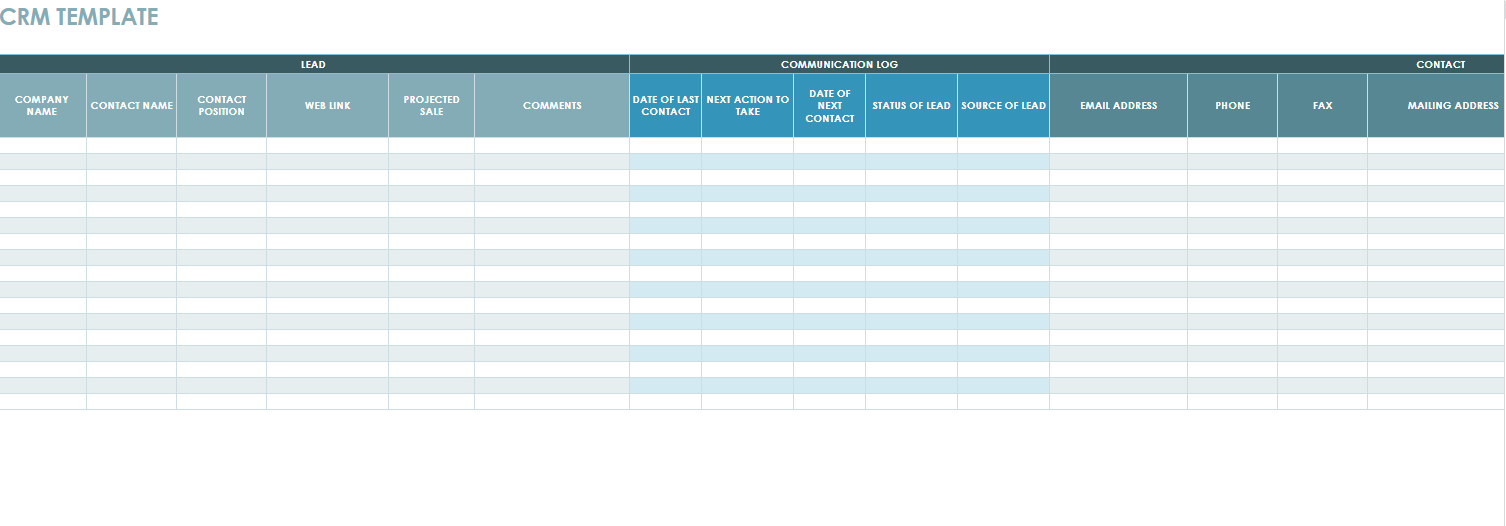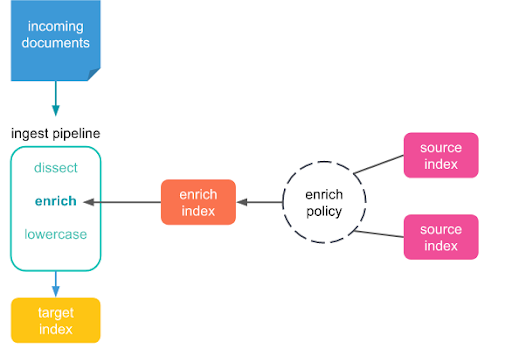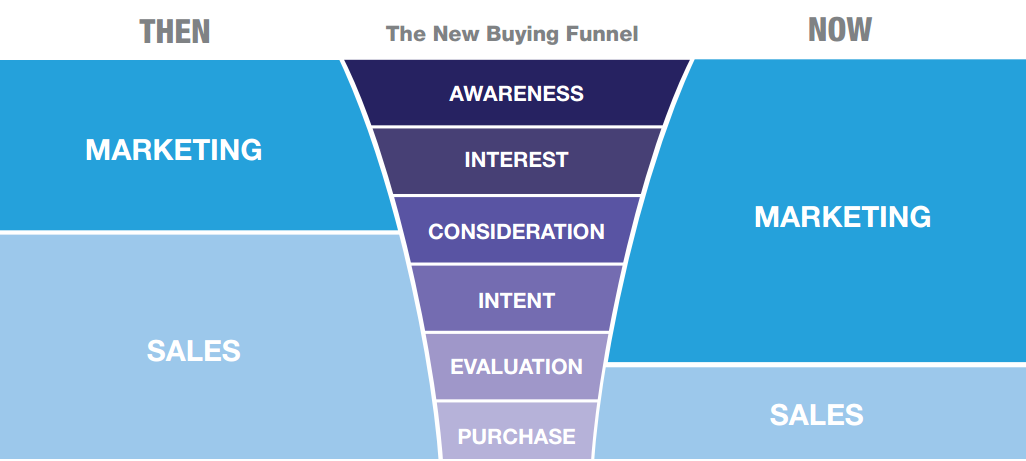Data-Driven Sales: How to Supercharge Your Sales Process With The Use of Company Data
Applying a data-driven sales strategy helps you understand what to focus on when, and with what kind of messaging.

What is Data-Driven Sales?
Data-driven sales is the art of using data to make smarter decisions and the effort of continuously optimising through analytical insights. By applying data science to sales, companies and salespeople understand what to focus on when and with what kind of messaging.
A data-driven sales process is just like any other, besides the fact that the core of what, how and when, is derived from data instead of an intuition or gut-feel.
Questions like: Which prospects should I focus on? What sells to whom (and is therefore interesting for product development and marketing)?
By utilising and enriching different databases, like your CRM and marketing automation, these questions can be answered and the information used to continuously steer commercial decision making, right through the sales and marketing funnel.
Foundation of Data-Driven Sales: The Ideal Customer Profile
An Ideal Customer Profile is a set of characteristics that describe your ideal customer. The set consists of different types of data that are combined, and results in a precise description that can be used as an active filter in order to identify the best opportunities for sales, real-time.
The Ideal Customer Profile (ICP) can be used to qualify marketing leads, to prioritise account management activities or to prospect new business companies for whom your services are interesting.
An ICP consists of different types of characteristics, which can be both static and dynamic. Ideally, your ICP consists of both; such as industry and company size, but also momentum and situational dynamics such as the hire of a new decision maker, open positions listed on the website, the opening of a new warehouse or a company receiving funding.
To derive an exceptional ICP, you must look at all the different sources of data tied to your sales that you can get your hands on. This means talking to marketing, diving into Google Analytics, talking to your customers and, last but definitely not least, taking a look at your CRM.
Types of Data for Data-Driven Sales
Like I said, there are different types of data you can identify that will help you optimise your efforts and grow your results. Let’s go through them one by one.
Operational Data
First of all, there is operational data from your CRM system (win rates, sales cycle length, number of contact moments, number of cases lost, average deal sizes, etc). This is all the information you and your company collects simply by doing sales and logging activities and results.
Collecting and structuring operational data can be a great way to optimise individual and team efforts and see what metrics can be improved.
If you do not have a CRM yet or you’d like to keep track of your activities separately, you can easily create a spreadsheet or use a template like the one below. Or take a free CRM trial with SpotlerCRM.

Traffic Data
Traffic data is the visitor activity data from your website and online channels. What do your visitors do? What are they looking for? Are they sales ready or still looking into options? With tools such as Leadfeeder or Leadinfo it is possible to identify traffic to some extent. However, ideally, you’d set up a marketing funnel to capture your visitors email addresses. By doing so, you can connect your online traffic data to the data in your CRM, and start investigating and utilising the buyer journey of your clients and prospects.
Traffic data is to be found in Google Analytics or through a marketing app like HubSpot. Enriching this data with other data sources, such as operational and company data, is essential to capitalise on its potential.
Company Information
Thirdly, to close the data circle, there is external company information. Company information exists in many shapes and forms, but essentially company information consists of different types of data about companies and organisations. Examples are their industry sector, recent company changes, location, size and turnover. Other examples include technologies used or open vacancies.
Used in conjunction with the two internal data sources, company information helps you structure, scale and optimise all commercial activities and therefore capitalise on the insights hidden in your internal data sources such as your website and CRM.
Key Take-Away
Data is readily available and all around us. Collected, structured and organised it can help businesses align and grow.
There are three different types of data in relation to sales:
Internal, operational data
External, company data or, when structured, information
Prospect activity data
Combined together, these three types of data allow for a commercially holistic approach to growing sales and business.
The Data-Driven Sales Rep Always Wins
“Sales is a grind” right? Well, no more! It might be a “numbers game” but not in the way you might think.
With the implementation of a data-driven business strategy, and including the three data-streams mentioned above, companies are able to use their resources much more efficiently. This means they can outperform their competitors with less budget and less hours. It also means that as a sales person, you can outperform your peers and crush targets.
What a data-driven approach entails is no more or less than making results measurable and then determining the following actions based on these insights.
Why not apply this to sales as we do with online marketing and web development?
For Whom is Data-Driven Sales Relevant?
Data-driven sales is important and relevant for everyone looking to optimise and improve themselves or their business processes. Yes, that means for small businesses too!
Although more and more sales processes are supported online by an extensive, inbound marketing customer journey, many solutions still need a human touch in the sales process to close the deal.
Most companies already have the habit of optimising the inbound customer journey by looking at traffic data and analysing the numbers. Combining this data with sales data from the CRM will yield better results and make sure sales and marketing are well aligned.
The data shows sales feedback and helps to determine communication, marketing and strategy. Where is the customer at the time of purchase? What are the challenges that are solved? What does a prospect need to solve the challenge? This information can be used to determine communication and marketing strategy, sales collateral and help in writing extensive sales playbooks etc.
By applying these kinds of insights, you can start implementing a real-time sales strategy, using data and information to help you decide who to sell to, at what time, and with what message or proposition.
Data-driven sales helps salespeople understand which activities, or habits, bring them success and which keep them from succeeding. This relates to both activities and strategy development. Which companies and profiles are the most interesting for you? What is actually the profile of your ideal customer?
Secondly, it helps salespeople predict their outcomes and maintain a realistic pipeline development.
Thirdly, data derived from sales can help marketers in deciding on sales relevant strategies and optimising the customer journey, before and after sales. This helps in aligning the sales and marketing effort.
Ultimately, the act of data-driven sales results in knowing exactly what both sales and marketing should focus on, and which companies in the market are your target accounts.
One Reason Every Salesperson Will Love the Results of Optimising Sales
Assuming that what you are selling is a solution to an existing problem, there will be companies in the world that experience this problem to a greater or lesser extent.
By focusing on the companies in the midst of this challenge, you as a seller can really add value. So, first of all, your job is just a hell of a lot more fun to do!
Finding out who your best customers are, where you make the easiest deals, and with which parties meetings are easily booked, you’ll start doing your customers and prospects a big favour which will, in itself, start generating leads for you.
In addition, systematic pipeline management ensures more rest, predictability and success for yourself. You will learn how many meetings, deals etc. you need to achieve your targets.
In this way, growth (of yourself or your organisation) becomes a simple step-by-step plan instead of being lucky. This means, more results for less work. And no more stressing over hitting targets!
A Quick Guide for Data-Driven Sales
If you want to start with data-driven sales, it is important that you start small. Start by organising your own database, your CRM. Your CRM is your holy grail from now on. You keep it up to date as if your life depended on it. By doing this, you’ll be able to derive an actual data-driven, hyper relevant Ideal Customer Profile and from there, optimise your sales efforts.
Step 1. Keep Track of Your Activities
Start by keeping track of your sales process. Points that you can keep track of are:
Your calls
The leads you followed up on
Your held meetings
LinkedIn or live event meet-ups: information from any moment of contact
Shared content pieces
Shared business cases
Deals closed
Value of the deals
Duration of the sales process: data from meetings, contact moments, quotation data etc.
Decision makers involved
You can keep track of all such data points in your CRM. Make sure you keep track of all your activities continuously and precisely. Only then will you be able to convert the data points into informative insights.
Also, decide with your team what to keep track of and to what extent. This will make sure you can combine data and derive information from shared experiences, e.g. more data.
Step 2. Understand and Compare the Activity Numbers
The gathered data will at some point start showing patterns. Insights you will get include:
Call to meeting hit rate: how many calls result in how many meetings?
No show rate: how many meetings are being cancelled or (especially in the case of online meetings) don’t show up?
Meeting to deal hit rate: the hit rate on all opportunities that you have created
The length of the sales process between different stages
The value of the different deals
Step 3. Use Discovered Insights to Steer Marketing and Sales
Ideally you want to really be able to a) depend on your CRM and b) learn from it.
You can then compare these informative insights with other data points and investigate whether there are perhaps correlations:
Which industries have the biggest deals?
How do the leads arrive that result in the largest order value?
What time of the year is the sales cycle shorter?
Which industry sectors and geographic locations provide the best customers?
Is it more often than not necessary to have a face to face appointment to be able to close?
An Ideal Customer Profile is a set of characteristics that describe your ideal customer. This profile can differ for different markets and products, but is always developed from data and analytics (no wild guesses!) and ideally through sales and marketing collaboration.
Data-Driven Sales: It All Starts With Prospecting
Now that you have established your Ideal Customer Profile, you can use these guidelines to guide you through the millions of good and bad opportunities out there. And yes, also within your CRM. Prospecting is the art of identifying the best opportunities in order to prioritise action.
Sales prospecting done right can make a big difference for your sales results and is the foundation of your data-driven sales strategy. Set aside a few hours daily or weekly, simply for prospecting following your data-derived ICP.
By the way, prospecting is an essential part of new business sales, but also very important for Account Management and Customer Success. In client-facing jobs, knowing which accounts to be in touch with when, makes all the difference in the output of your daily activities.
Things to Watch Out For
Irrelevant or Inconsistent Data
Databases can have all sorts of inconsistencies: duplicate records, incomplete data, messy data or irrelevant, old information.
Make sure to add database cleaning to your (team’s) weekly schedule. If you’re looking at a bigger project and need continuous data cleaning, or want to enrich your database with external data points that are relevant for your sales and marketing targeting, it might be an idea to take a look at sales intelligence and company data providers.
These kind of solutions can clean up the data stacked in your CRM, will update it automatically if anything changes, and will help you find prospects that have a similar profile like your best performing customers.
The Data-Saturation Syndrome
Some teams have great data and great insights, but having these insights and not putting them into practice leads nowhere.
The best performing teams have weekly and monthly meetings, looking into success stories and data trends to determine their next steps. This way you can truly stay ahead of your competition and make sure you have the most accurate outreach and customer success as possible.
Marketing and Sales Misalignment
Data can be the juice in the relationship between marketing and sales. However, the key is that both parties make a few decisions upfront:
Vision and mission: where are we going and what do we need to get there?
Terminology: let’s use the same words when discussing prospects, leads, opportunities, MQL’s and SQL’s.
Mutual expectations: decide on an SLA agreement and have regular meetings to keep sight of (met) expectations
Be friends, sit in the same room and celebrate together!
Conclusion
Recognising and utilising data is a key ingredient for future success of your sales and marketing efforts.
Incorporating sales data in your business strategies is only logical and it will help you improve results over the long run like nothing else.

About the Author
Zaza Muntinga is Country Marketing Manager for Vainu, a tech driven company data platform, implementing company data in the business systems of companies all over the world. She is passionate about sales and marketing and above all, helping salespeople to become truly relevant for their clients and prospects.
Really Simple Systems is now Spotler CRM
The same great technology, a CRM platform that is focused on the needs of B2B marketers, provided by the same great team, at a great price!

